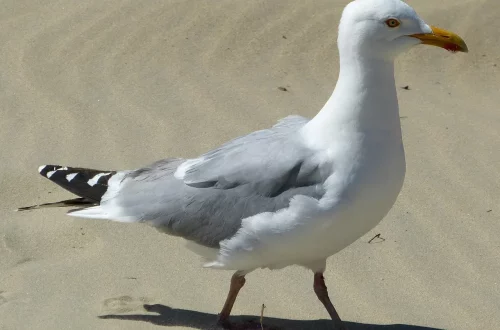
Unlock Your Strength with the Ultimate Glute Press Workout Guide
Building a strong and sculpted backside is a fitness goal for many individuals, whether for aesthetics, athletic performance, or overall health. The glutes, comprised of three major muscles—the gluteus maximus, gluteus medius, and gluteus minimus—play a crucial role in various physical activities, from walking and running to squatting and jumping. Strengthening these muscles not only enhances your physical appearance but also contributes to better posture, reduced risk of injury, and improved athletic performance.
Incorporating targeted glute exercises into your workout routine can lead to significant gains in strength and endurance. While many people focus on conventional exercises like squats and deadlifts, the glute press offers a unique and effective way to isolate and develop these muscles. This exercise can be performed using various equipment, including resistance bands, weights, or machines, making it accessible for beginners and seasoned athletes alike.
Additionally, understanding the mechanics of the glute press can help you maximize its effectiveness. Proper form and technique are essential to prevent injury and ensure that you are engaging the correct muscle groups. As you embark on your journey to unlock your strength, remember that consistency, dedication, and a well-rounded approach to fitness are key to achieving your goals.
Understanding the Glute Muscles
To fully appreciate the benefits of the glute press workout, it’s vital to understand the anatomy and function of the glute muscles. The gluteus maximus is the largest muscle in the body, responsible for the movement of the hip and thigh. It plays a significant role in activities such as running, climbing, and standing up from a seated position.
The gluteus medius and minimus, while smaller than the maximus, are equally important. The medius stabilizes the pelvis during walking and running, while the minimus aids in hip abduction and rotation. Together, these muscles contribute to overall lower body strength and stability.
When these muscles are weak, it can lead to a variety of issues, including lower back pain, knee problems, and hip injuries. Strengthening the glutes can help alleviate these problems by improving your posture and alignment. Furthermore, strong glutes enhance athletic performance by providing the power and stability needed for explosive movements in sports.
To effectively train these muscles, it’s essential to incorporate a variety of exercises that target all three gluteal muscles. The glute press is particularly effective because it allows for a focused contraction of the glutes, helping to build strength and muscle mass.
The Benefits of Glute Press Workouts
The glute press workout offers numerous benefits that extend beyond mere aesthetics. One of the primary advantages is the ability to isolate the glute muscles effectively. This isolation helps in developing muscle strength, which is particularly beneficial for athletes looking to improve their performance in sports that require explosive movements, such as sprinting or jumping.
Moreover, glute presses can enhance your overall body mechanics. Strong glutes contribute to better hip stability, which is crucial for maintaining proper alignment during various activities. This stability not only improves performance but also reduces the risk of injuries, especially in the lower back and knees.
In addition to physical benefits, glute press workouts can also have a positive impact on mental health. Regular strength training has been shown to release endorphins, which can boost mood and reduce feelings of anxiety and depression. As you progress in your strength training journey, you may experience increased confidence and self-esteem, which can have a ripple effect on other areas of your life.
Another significant benefit of glute presses is their versatility. They can be performed with various equipment, including resistance bands, dumbbells, or cable machines, making them suitable for any fitness level. You can adjust the resistance and intensity to ensure that you are continually challenging yourself and making progress.
Lastly, incorporating glute presses into your routine can lead to improved overall physique. A well-developed glute area not only enhances your appearance but also contributes to a balanced and proportionate body shape. This can lead to increased body confidence and a more positive self-image.
How to Perform the Glute Press Correctly
Proper form and technique are critical when performing the glute press to ensure effectiveness and minimize the risk of injury. Here’s a step-by-step guide on how to execute the glute press with proper form:
1. **Starting Position**: Begin by lying on your back on a flat surface or a workout mat. Bend your knees and place your feet flat on the ground, about hip-width apart. Your arms can be placed at your sides or crossed over your chest.
2. **Engage Your Core**: Before you begin the movement, engage your core muscles to stabilize your spine. This will help protect your lower back during the exercise.
3. **Lift Your Hips**: Press through your heels to lift your hips off the ground. Your body should form a straight line from your shoulders to your knees at the top of the movement. Focus on squeezing your glutes as you lift, ensuring that you are engaging the correct muscles.
4. **Hold and Lower**: At the top of the movement, hold for a moment to maximize the contraction in your glutes. Then, lower your hips back down in a controlled manner, avoiding any sudden drops.
5. **Repetitions and Sets**: Aim for 10-15 repetitions per set, and perform 3-4 sets depending on your fitness level. As you become more comfortable with the movement, you can increase the resistance or add weights to further challenge yourself.
6. **Common Mistakes**: Be aware of common mistakes, such as arching your back or using momentum to lift your hips. Focus on controlled movements, and ensure that your knees do not collapse inward during the lift.
By following these steps and maintaining proper form, you can maximize the effectiveness of your glute press workout while minimizing the risk of injury.
Incorporating Glute Press into Your Routine
To effectively incorporate the glute press into your workout routine, consider the following tips. First, aim to include glute exercises at least twice a week. This frequency allows for sufficient recovery time while providing enough stimulus for muscle growth.
Pair the glute press with complementary exercises that target other muscle groups. For example, include lower body workouts such as squats, lunges, or deadlifts to ensure a well-rounded training regimen. This approach helps in developing overall strength and preventing muscle imbalances.
Additionally, consider varying your glute press routine to keep things interesting and challenging. You can switch between different equipment, such as using a barbell, resistance bands, or a cable machine. Each variation can target the glutes differently, providing a comprehensive workout.
Don’t forget to include a proper warm-up before starting your workout. A dynamic warm-up can enhance blood flow to your muscles and prepare your body for the exercises ahead. Similarly, a cool-down and stretching session post-workout can aid in recovery and flexibility.
Lastly, listen to your body. If you experience pain or discomfort while performing the glute press, it may be an indication of poor form or an underlying issue. Always prioritize safety and consult a fitness professional if necessary.
**Disclaimer**: This article does not constitute medical advice. Consult a healthcare professional for any health concerns or before starting a new exercise program.




